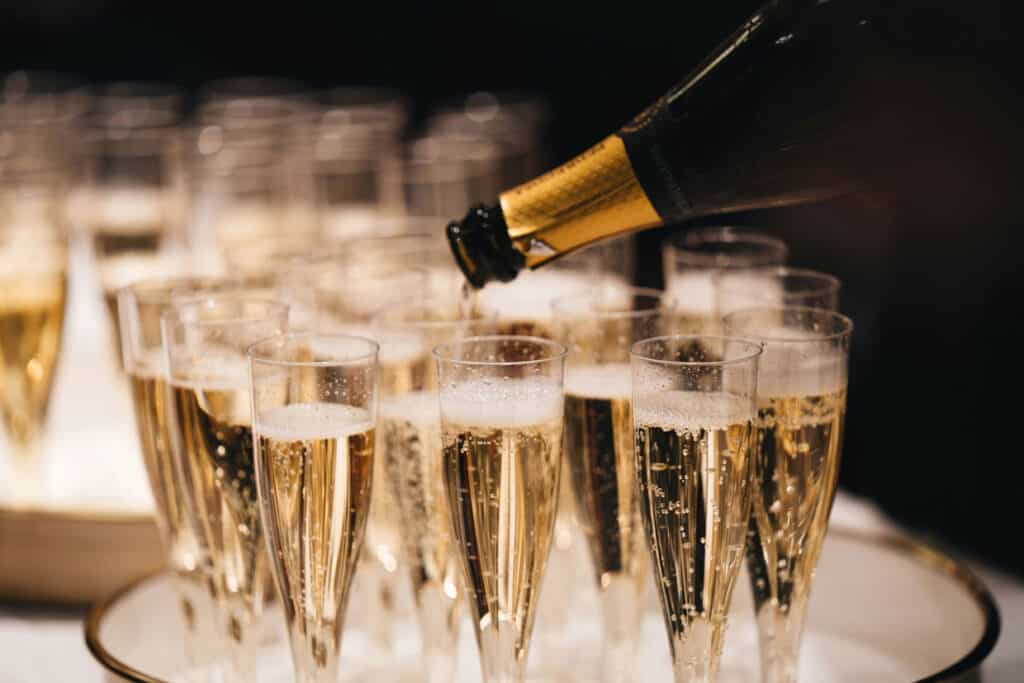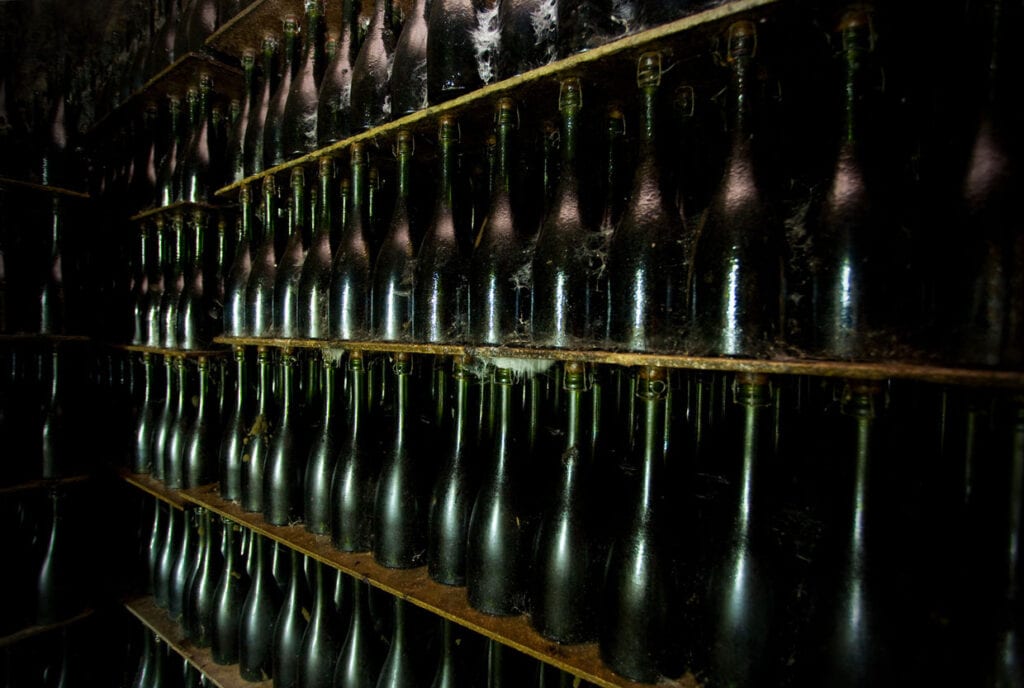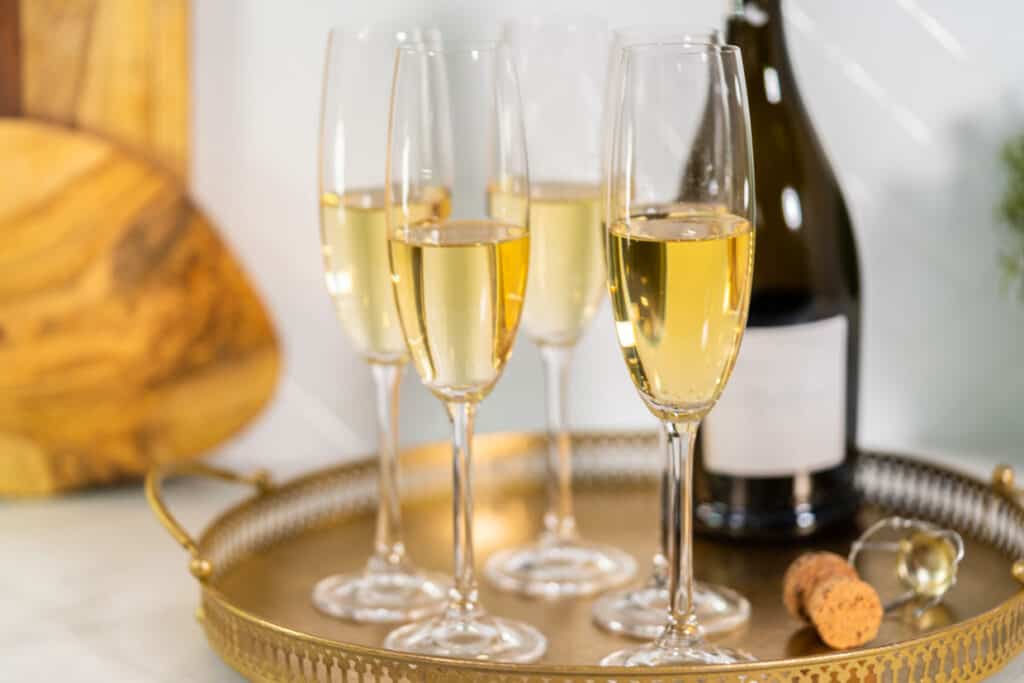If you’ve ever wondered, “does champagne go bad?” then you’ll be glad to know it does, but it’s easy to tell if it has. Whether you’ve popped the cork makes a big difference, but there are ways to make those bubbles last a little longer.

Shelf life of champagne
The perfect light, effervescent and delicate glass of champagne is worthy of celebration. But those bubbles don’t last forever.
Whether you’re talking about the real deal from the Champagne region of France, a special bottle of sparkling wine straight from the vineyard or an inexpensive bubbly from the grocery store, they have one big thing in common. The carbonation inside a bottle of champagne can easily fizzle out and change its flavor, especially once it’s uncorked.
If you’ve popped open a bottle of bubbly and have a little leftover, you might be wondering, “does champagne go bad?” It’s easy to have a little leftover, if a party fizzles or if you’re using it for a recipe like champagne jello shots. How do you know if your champagne has gone bad? Here’s what to look for and what to do.
“To avoid spillover when opening champagne, gently twist the bottom of the bottle while firmly holding the cork with the other hand.”
— Sharon Rhodes, The Honour System

Why champagne goes bad
There are a few main reasons why champagne goes bad. From how old it is to how it’s stored, here’s what to look for:
Age: Champagnes are already aged before they make it to the shelves, so they don’t need to be aged anymore. How long does champagne last? In general, a non-vintage wine can be kept unopened for 3 to 5 years, and vintage sparkling wines can be stored for 5 to 10 years.
Type: Champagne is a type of sparkling wine, but it’s not the only type. Sparkling wines made in the traditional method, like cremant and cava, can be treated the same as champagne. Prosecco is made differently, but doesn’t follow the same age rules. Drink prosecco within 6 to 12 months of purchase.
Storage: Keep the bottles in a horizontal position instead of upright, in a cool, dry place. Many people store their champagne in the fridge, but at the most it should only be refrigerated for a few months as the air is very dry and it undergoes even more temperature fluctuations from opening and closing the door.
Temperature: Most bottles of wine should be stored between 45 F and 65 F, but champagne is best when stored in the range of 50 F to 56 F. Higher temperatures, especially those above 70 F, can affect the flavor, while too-cold temps cause the cork to dry out, which allows oxygen into the bottle, causing oxidation. This forces the champagne to go flat sooner.
Signs champagne has expired
A bottle of champagne generally keeps for a few years when stored properly. But you can know it’s expired by a few key signals:
- Effervescence: If the signature bubbles aren’t present when you pour bubbly into a champagne flute, then it’s likely gone flat. This could be from improper storage or if the bottle has been open for a while.
- Flavor: If the taste is sour, then it’s likely past its prime. It’s still okay to drink and use in a champagne cocktail, but it just won’t taste as good.
- Fragrance: When you open the bottle, you should smell champagne’s dry, fruity, floral scent. If it smells musty, the bottle has likely expired.

How to keep champagne fresh
Now that you know the answer to the question, does champagne go bad, you need to know how to prevent it. There’s a lot more to storing alcohol properly than just stashing it in your bar cabinet or your fridge. And once it’s been opened, the rules change. There are a few ways to get the most out of your bubbly and make champagne last a little longer.
Unopened bottles: These should be stored in a cool, dark, dry place, ideally between 50 F to 56 F. Keep the bottle away from light, as direct light can also alter champagne’s flavor.
Opened bottles: Once champagne is open, it’s best to drink it straight away. The more air in the bottle, the more the wine will oxidize.
In between pours, stash the bottle in an ice bucket to keep the bubbles strong. You can also use a specialty champagne bottle stopper, which is designed to hug the lip of the bottle so the carbonation pressure doesn’t force the cork out. This lets your bubbly live for another day or two; it won’t taste quite the same or have the same texture as fresh, but it will still taste great.
“Sealing the bottle with a champagne stopper will preserve the bubbles. You can store it in the fridge for 3 to 5 days.”
— Lisa Wells, Coastal Wandering

What to do with leftover champagne
You can use leftover champagne as a cooking wine, as long as it isn’t more than a week old. If there are any carbon dioxide bubbles left, they will evaporate with heat. When cooked, sparkling wine lends a sweet to dry taste in cooking.
Another idea is to let sparkling wine turn into vinegar. All wines easily turn to vinegar after opening, and sparkling is no different.
To make champagne vinegar, pour the leftover bubbly into a glass jar, cover with cheesecloth and store it in a cool, dry place for a few months. Taste it every so often to see if it has turned to vinegar. You can use it in marinades, salad dressings, shrubs and more.
So does champagne go bad? Yes, but it’s possible to prevent it by drinking it within its lifespan and by using proper storage techniques.
Based in Charlotte, N.C., Susannah Brinkley Henry is the cocktail content creator behind the blog Feast + West. Her work has been featured in Southern Living, Oprah Daily, Buzzfeed, and more. In 2019, her website was a finalist in the Saveur Blog Awards for Best Entertaining Blog. As a professional graphic designer, photographer, writer, and recipe developer, Susannah helps home bartenders and drink enthusiasts level up their cocktail skills.